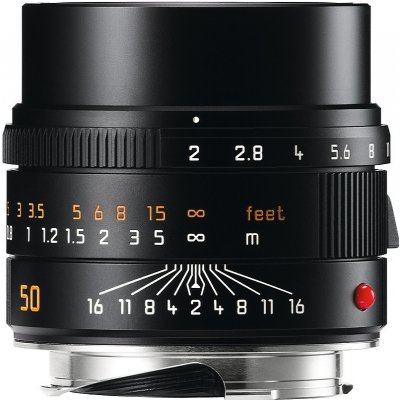
Nikon and Canon lenses are mass produced by machines in cheap labour factories. In fact, compared to the likes of modern Canon and Nikon glass, Leica lenses are extremely good value even if they cost up to five times as much for the equivalent. However from f/4 down, the Cron is pretty damn close. The Summilux, wide open produces dream like results that in my opinion cannot be achieved with the Summicron.The Summilux is Aspherical which allows only very minimal spherical aberration and to get this quality of lens this small costs money.At night the Lux is in it’s element mailing shots that the Cron just can’t cope with. The Summilux is faster and although it’s only one stop faster – it’s still much faster.

However, it’s not exactly horses for courses, and here’s why… At £2650 ($4100), you have to “need” a fast lens to justify this price, especially when the Leica 50mm Summicron comes in at only £1650 ($2550). The Leica 50mm Summilux ASPH f/1.4 is a lot of money in anyone’s books.


In fact you could argue that focusing a faster lens like the Lux is more difficult as the focal plane is narrower. In practise, the Cron is every bit as easy to focus as the Lux. However, like all other Leica lenses, it’s focus ring is silky smooth – not too stiff that you miss shots and not too loose that you can’t nail it. The Summicron, for some reason lacks the focus tab. I was worried about focusing on the Cron as I’m used to Leica lenses with focus tabs. The Cron is also shorter than the Lux by 9mm (approx 20%) at only 43.5mm as oppose to the Lux’s 52.5. This doesn’t sound much bit it is immediately noticeable in your hand. The Summicron is definitely the champ here weighing in at only 240g, nearly 100g lighter than the Summilux. The big differences between these two lenses is how each lens renders the image, ease of focus and size/weight. Obviously f/1.4 is faster, but in real life f/2 is still really fast. There’s not a great deal of practical difference between f/1.4 and f/2. So that’s what I went for and here’s my finding… I was looking for a lighter, more compact lens that could deliver Summilux quality and the only answer as far as I could see was the Leica 50mm Summicron f/2. So I got to thinking what lens would be best for travel. It’s also mounted on an M Monochrom most of the time and the Monochrom is noticeably heavier than the M9. This isn’t an issue unless you are carrying it about all day. That sounds ridiculous if you compare it to DSLR lenses, but for a Leica lens it is quite heavy and quite big. I use this lens for nearly everything from street photography to portraiture and really never thought of using anything else until I started to travel with work. The 50mm Lux, for me, epitomises everything Leica is about… amazing sharpness, incredible bokeh / depth of field and the ability to capture an almost 3D feel in selective focus. I have shot various 50mm lenses on my rangefinders including various Leicas, a Zeiss, a 1963 Canon and a Voigtlander, but the one I keep coming back to and the one I truly love is the Leica 50mm Summilux f/1.4. To me, the “what’s not” going to be framed is as important for composition as the “what is”. I can move the viewfinder about and see exactly what’s going to be in the frame and what’s not.

I like to have a little bit of “bleed off” to play with. I also find a 50mm lens more natural to frame on a Leica than say a 35mm or a 75mm. I don’t like to alter a scene by being so close to a subject that they change what they were doing because they have a camera in their face and I find 50mm is the perfect length to get close… but not too close. I’m a street photographer that doesn’t like to get in the way of his subjects. I’ve tried numerous other focal lengths, but when it comes down to it, I’m a 50mm guy. I’ve finally admitted to myself that I’m a 50mm guy.


 0 kommentar(er)
0 kommentar(er)
